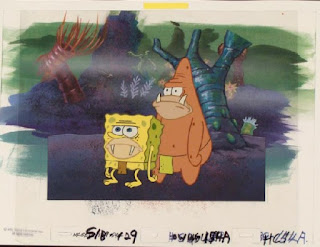 |
Animation is fun, and watching cartoons is something that all of
us have done when we were kids and even now we all love to watch an Animation
movie.
The art of animation goes way back to Paleolithic cave
paintings. The early examples of attempts to
capture the phenomenon of motion into
a still drawing can be found in Paleolithic cave paintings, where animals are often
depicted with multiple legs in superimposed positions, clearly attempting to
convey the perception of motion.
One of the
very first successful animated cartoons was Gertie
the dinosaur (1914) by Winsor
McCay. It is considered the first example of true character animation.

The golden
age of Animation is from 1920’s to 1960’s.
Disney,
MGM, Paramount pictures were the largest studios producing these 5 to 10-minute
"shorts." Walt Disney’s 1928 cartoon Steamboat Willie starring Mickey Mouse was the first to use a Click track during the recording session, which produced better synchronism.
"Mickey
mouse" became a term for any movie action (animated or
live action) that was perfectly synchronized with music.
Disney
produced the first cartoon in 3-strip Technicolor.
Later,
other movie technologies were adapted for use in animation, such as multi-plane cameras with The Old Mill (1937), stereophonic sound in Fantasia (1940),
widescreen processes with the feature-length Lady and the Tramp (1955),
and even 3D with Lumber Jack-Rabbit.
In 1937, Disney created the first sound and color
animated feature film
Today,
animated cartoons for all audiences are produced mostly for television.
Television
animation for children flourished on cable channels like Nickelodeon, Disney Channel and Cartoon Network, PBS Kids,
and in syndicated afternoon time slots.
The
book which is called bible of animation is the “Illusion of life”.
Making
of Animation (2D)-
Story board:
The story is developed as a "storyboard", a giant-sized comic strip. As the story develops,
new drawings are added to the storyboard. Since the drawings are pinned onto a
cork board, it is easy to make alterations to the story.
Backgrounds: The backgrounds
are painted on cardboard or celluloid with tempera, acrylic or sometimes even
oil paints. The backgrounds are the "landscape"
in which the characters are moving, and they are often made into large-size
panoramas, "pan backgrounds",
considerably larger than the picture format. The camera follows the characters
as they move across the background. This background is painted in a format
suitable for a vertical camera move.
Dialogue and Music: Before the tedious drawing work can begin,
the dialogue is recorded on tape and then transferred onto magnetic film. This
filmstrip is analyzed in a sound reader, and every syllable is registered on an
"exposure sheet" -
necessary to obtain perfect synchronization between
sound and picture. The sheet is divided into many rows, each corresponding to
one frame of film. An optical sound track is then prepared and printed onto the
film.
Animation: Every second of finished film consists of 24 frames, requiring 12 to 24 drawings, depending upon the speed
of movement - faster movements need more drawings per second, slower moves can
be animated with less, with three or even more frames shot of every drawing. The animated drawings are filmed on
black & white film to check the smoothness
of the movements. Effects are also added by
drawing. Animation was done using the 12 principles.
Ink & Paint: In order to superimpose the
animated characters on the backgrounds, the drawings are copied onto
transparent sheets of celluloid or plastic, usually called "cells". The lines are traced in ink, and the colors are
filled in on the reverse side of the cells, in order to get completely even
colors when viewed from the front.
Filming: The filming is carried out on an "animation stand". Sometimes the picture is divided into
several levels (4 on this "multi -plane" stand), separated by about
30 cm, or 12".Today, the 2D Animation industry is taken over by the 3D Animation industries, but we definitely get to see more and more good movies getting made.
Animation will be cherished in the years to come.
- Ms. Deepa & Mr. Sukayan












